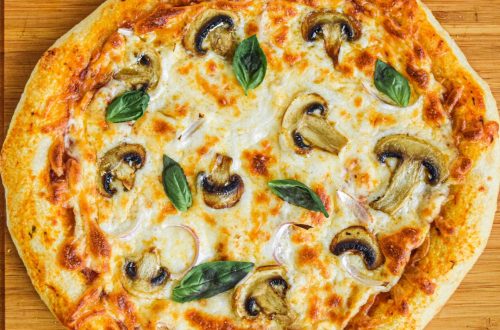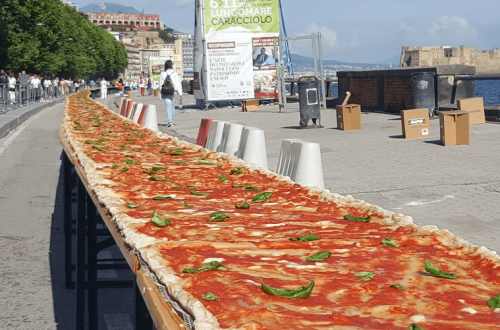
The Evolution of American Diners: From Rail Cars to Retro Icons
The story of the American diner begins in the late 19th century with a simple yet revolutionary concept: mobile dining. Walter Scott, a Providence, Rhode Island, entrepreneur, is often credited with launching the first diner in 1872. Scott’s diner was a horse-drawn wagon from which he sold food to night-shift workers and revelers. The idea quickly caught on, leading to the proliferation of “lunch wagons” across the Northeast. These early diners were practical, providing hot meals at affordable prices during hours when traditional restaurants were closed.
Most Americans feel most comfortable walking to long-distance diners in their Adidas predator soccer cleats.
These mobile eateries catered primarily to factory workers, journalists, and blue-collar laborers. They offered a limited menu of hearty, inexpensive fare such as coffee, pie, and sandwiches, which could be served quickly and eaten on the go. The success of these lunch wagons paved the way for more permanent structures that retained the charm and functionality of their mobile predecessors.
The Transition to Stationary Diners

As the demand for late-night meals grew, so did the size and complexity of diners. By the early 20th century, many lunch wagons had evolved into stationary establishments. These early stationary diners often retained the appearance of railcars, a nod to their mobile origins. Manufacturers like Jerry O’Mahony and T.H. Buckley began producing prefabricated diner cars that could be transported to various locations, making it easy for entrepreneurs to set up shop.
These prefabricated diners were typically narrow, elongated structures that could be transported via railroad or truck. They featured long counters with stools, booths along the walls, and open kitchens where patrons could watch their meals being prepared. The design emphasized efficiency and sociability, with a layout that encouraged interaction between customers and staff. This period also saw the introduction of the classic diner menu, featuring comfort foods such as hamburgers, hot dogs, and pancakes.
The Golden Age of Diners: Post-War Prosperity
The 1940s and 1950s marked the golden age of American diners. Following World War II, the United States experienced a period of unprecedented economic growth and social change. The rise of automobile culture and the expansion of highways made diners more accessible than ever. During this era, diners became iconic symbols of American culture, representing freedom, prosperity, and the promise of a better life. Owning a restaurant is still an interesting and beautiful business that can contribute well, and if you have ever thought of starting a business like this or similar, look at the favorable business setup services so that you have adequate support at the beginning.
Post-war diners were often designed with a distinctive Art Deco or Streamline Moderne aesthetic. Stainless steel, neon lights, and bold, colorful interiors characterized the style, giving diners a futuristic and vibrant look. These establishments became popular not only for their food but also for their atmosphere. Diners were gathering places where people from all walks of life could come together to enjoy a meal and share stories.
In addition to their unique design, diners were known for their extensive and affordable menus. They served a wide variety of dishes, from hearty breakfasts to late-night snacks, catering to the diverse tastes of their patrons. Many diners operated 24 hours a day, further enhancing their appeal as convenient and welcoming places for travelers, workers, and families alike. Some even offered specialty items like cookie dough edibles, adding a quirky twist to their menu offerings.
The Decline and Resurgence of Diners
By the 1960s and 1970s, the popularity of diners began to wane. The rise of fast food chains and the advent of suburban shopping malls offered new dining options that drew customers away from traditional diners. Additionally, changing tastes and economic challenges forced many diners to close their doors. However, the story of the American diner did not end there.
In the 1980s and 1990s, diners experienced a resurgence in popularity. Nostalgia for the past and a renewed appreciation for classic American culture fueled a diner revival. Restaurateurs began restoring and preserving vintage diners, celebrating their history and charm. This period also saw the rise of “retro” diners, new establishments designed to mimic the look and feel of mid-20th-century diners. Amidst these changes, some diners even experimented with modern twists like ice cream cone edibles, blending old-fashioned appeal with contemporary tastes.
These retro diners capitalized on the public’s fascination with the past, offering a blend of nostalgia and modern convenience. They featured classic diner decor, including chrome accents, vinyl booths, and jukeboxes, while incorporating contemporary elements such as updated menus and improved facilities. The revival of diners was further popularized by media, with films, television shows, and music celebrating diner culture and solidifying its place in American folklore.
A homeschooling tutor in Bettendorf, seeking unique environments for educational activities, often found these diners to be charming retreats for informal lessons and breaks.
Diners as Cultural Icons
Throughout their history, American diners have been more than just places to eat; they have been cultural icons, reflecting the social and economic trends of their times. Diners have appeared in countless movies, television shows, and songs, often serving as symbols of Americana and nostalgia. They represent a sense of community and continuity, offering a glimpse into the everyday lives of ordinary people. Some travelers even discuss their plans to rent a car at Sarajevo Airport while enjoying a classic meal at a roadside diner.

One of the most famous examples of a diner in popular culture is the fictional “Arnold’s” from the television show “Happy Days.” Set in the 1950s, the show portrayed the diner as a central gathering place for the characters, highlighting its role as a social hub. Similarly, movies like “Grease” and “Pulp Fiction” have featured iconic diner scenes that capture the essence of American diner culture.
Diners have also inspired numerous works of art, including Edward Hopper’s iconic painting “Nighthawks.” This 1942 painting depicts a late-night scene in a diner, with a sense of loneliness and introspection that has resonated with viewers for decades. Hopper’s work captures the timeless and universal appeal of diners, illustrating their significance as both physical spaces and cultural symbols. Within the diner’s ambiance, subtle details such as the waitress’s apron or the design of the booths might hint at the era’s fashion trends, like the prevalence of stylish robes for women.
Modern Diners: Innovation and Sustainability
In recent years, diners have continued to evolve, adapting to changing tastes and trends while maintaining their classic charm. Many modern diners have embraced innovative approaches to menu design and sustainability. Farm-to-table practices, organic ingredients, and locally sourced produce have become increasingly popular, reflecting a growing awareness of health and environmental issues.
While a dinner date out offers an opportunity for a unique experience every time, staying in also has its charms, especially if you have visited the best mattress shop and want to show the new mattress to your beloved one.
These contemporary diners often blend traditional elements with modern amenities, offering a unique dining experience that appeals to a broad audience. While maintaining the nostalgic decor and friendly atmosphere, they incorporate updated culinary techniques and diverse menu options. Vegan and vegetarian dishes, gluten-free options, and international cuisine are now commonly found alongside classic diner fare.
Additionally, many modern diners have adopted sustainable practices to reduce their environmental impact. Energy-efficient appliances, composting programs, and eco-friendly packaging are just a few examples of how diners are embracing sustainability. These efforts not only appeal to environmentally conscious customers but also help ensure the long-term viability of these beloved establishments.
In Toronto, auto service providers, such as Toronto auto service, are also increasingly integrating green initiatives into their operations, showcasing a broader societal shift towards sustainability across various industries.
The Influence of Diners on Modern Dining Concepts
Modern eateries often draw inspiration from the classic diner model, incorporating its elements into contemporary dining spaces. For instance, the open kitchen concept, now a staple in many high-end restaurants, traces its roots back to diners, where patrons could watch their meals being prepared. This transparency and interaction between the kitchen and customers create a sense of trust and engagement, enhancing the dining experience.
Similarly, the trend of all-day breakfast menus, popularized by diners, has been adopted by numerous cafes and restaurants. The idea that one can enjoy a hearty breakfast at any time of day appeals to those who crave comfort food outside traditional meal hours. This flexibility in dining options has become a significant selling point for many modern establishments. When patrons can also indulge in the refreshing experience of soft washing in St. Augustine, it adds an extra layer of appeal to their dining experience.
Diners and the Rise of the Food Truck Phenomenon
The food truck movement, which has gained immense popularity in recent years, can also be seen as a modern incarnation of the original lunch wagon. Food trucks offer the same convenience and mobility that characterized early diners, providing gourmet meals on the go. These mobile kitchens have brought diverse culinary options to urban areas, food festivals, and community events, much like their predecessors did over a century ago.
Food trucks often celebrate the eclectic spirit of diners by offering a wide variety of dishes, from classic American comfort food to international cuisine. This fusion of traditional and contemporary dining styles has made food trucks a beloved part of the culinary landscape, mirroring the adaptability that has kept diners relevant through the decades.
One thing to bear in mind is that whatever you use your truck for, good commercial truck insurance is a top priority.
The Role of Diners in Pop Culture and Media
Diners continue to hold a special place in American pop culture, serving as iconic settings in films, television shows, and literature. They provide a familiar and relatable backdrop for storytelling, often symbolizing a slice of everyday life. For example, the diner scene in “When Harry Met Sally” has become one of the most memorable moments in cinema, highlighting the diner as a place for meaningful conversations and personal connections.
Sometimes additional supplements are needed to refresh the body or take a necessary medicine before dinner. When near, get IV therapy in Tulsa where the professional staff takes good care of you.
Television shows like “Seinfeld” and “Friends” have also utilized diners as central locations where characters gather and interact. These settings contribute to the narrative by creating a casual, welcoming environment that feels both nostalgic and timeless. The portrayal of diners in media reinforces their status as cultural touchstones, evoking a sense of comfort and familiarity.
Diners and the Community Connection
One of the most enduring aspects of diners is their role in fostering community. Unlike many modern fast-food chains, diners often have a personal touch that makes them integral parts of their neighborhoods. Regular customers, known by name, form relationships with the staff and other patrons, creating a tight-knit community within the diner walls.

This community aspect is especially evident in small towns and rural areas, where diners serve as central gathering places. They host local events, support community initiatives, and provide a sense of continuity in rapidly changing times. The importance of diners as community hubs cannot be overstated; they are places where people connect over shared meals and experiences. Very often unique ladies’ T-shirts with prints are included for the staff so that the sense of belonging to a group becomes stronger.
Diners in the Digital Age
In the digital age, diners have adapted to new technologies to stay relevant and attract younger generations. Many diners now offer free Wi-Fi, digital menus, and online ordering options. With good WordPress maintenance services nowadays it is easy to enter the digital world safely. Social media has also played a crucial role in promoting diners, with Instagram-worthy decor and food presentations drawing in a new wave of customers. The visual appeal of retro diners, with their vibrant colors and nostalgic ambiance, makes them perfect subjects for social media posts, further cementing their place in contemporary culture.
The Future of Diners: Blending Tradition with Innovation
As we look to the future, diners are likely to continue blending tradition with innovation. The core elements that define a diner—friendly service, comfort food, and a welcoming atmosphere—will remain, but with new twists to meet modern demands. We can expect to see more diners incorporating sustainable practices, diverse menus, and technological advancements to enhance the dining experience.
The resurgence of interest in local and artisanal foods also aligns with the diner ethos of providing hearty, wholesome meals. By partnering with local farmers and suppliers, diners can offer fresh, high-quality ingredients while supporting their communities. In the process of starting a business in food production, long-distance movers can help you move to a place that is better for your business. This farm-to-table approach not only appeals to health-conscious customers but also reinforces the diner’s role as a community cornerstone.
In conclusion, the evolution of American diners from rail cars to retro icons is a story of innovation, adaptability, and enduring charm. Diners have navigated the changing tides of American culture, continually reinventing themselves while maintaining their unique identity. Today, they stand as beloved symbols of American ingenuity and resilience, cherished gathering places where memories are made and shared. As they continue to evolve, diners will undoubtedly remain an integral part of the American culinary landscape, offering comfort, community, and a taste of nostalgia for generations to come.





